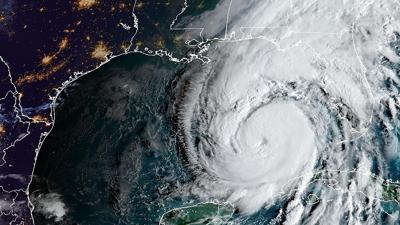Hurricane Helene made a devastating landfall on Thursday night, hitting Florida’s Big Bend region with catastrophic winds of 140 mph—the first Category 4 hurricane to do so since record-keeping began in 1851. The storm made landfall near Perry, Florida, at approximately 11:10 p.m. ET, before rapidly weakening to a Category 1 as it moved inland toward Georgia.
By 3 a.m. ET, the National Hurricane Center reported sustained winds of 80 mph, with further weakening expected as the storm continued its trajectory. Tragically, at least one fatality in Florida has been attributed to Helene, and authorities fear that number could rise as rescue operations commence.
In anticipation of the storm’s impact, schools, airports, and major roadways across Florida were closed. Over 70,000 residents from Franklin, Taylor, Liberty, and Wakulla counties evacuated under mandatory orders, as officials warned of life-threatening conditions. Wakulla County Sheriff Jared Miller described the situation starkly: “This will not be a survivable event for those in coastal or low-lying areas. There has not been a storm of this magnitude to hit Wakulla in recorded history.”
Forecasters cautioned that Helene’s strong winds could penetrate well inland across the southeastern U.S., and the National Hurricane Center urged residents to remain sheltered until the storm fully passed. They noted that the eye of a hurricane can present deceptive calm before hazardous winds return.
Helene marks the fourth hurricane to make landfall in the U.S. in 2024, a year that has already seen notable storm activity. The National Weather Service recorded more than 8 inches of rain in Asheville, North Carolina, over 26 hours leading up to Thursday afternoon, with additional rain anticipated.
As winds reached 60 mph, the Florida Highway Patrol closed the Sunshine Skyway Bridge, connecting St. Petersburg to Bradenton. Florida State University and Florida A&M University canceled classes but opened their doors to students and residents, with emergency shelters established on campus.
While detailed damage assessments remain pending, the National Hurricane Center warns that Category 4 storms can cause “severe” damage to well-built homes, uproot trees, and down power lines. Power outages affected over one million customers in Florida alone by midnight, a number expected to rise as Helene continued inland.
The storm is also forecast to bring tornadoes, life-threatening storm surges, and significant rainfall to much of the Southeast, with widespread totals of 6 to 12 inches and isolated areas possibly receiving up to 20 inches.
With the storm making landfall in the sparsely populated Big Bend area, authorities issued stern warnings. The sheriff's office in Taylor County advised those remaining to write personal information on their arms in case of emergencies—a chilling reminder of the storm's potential dangers.







